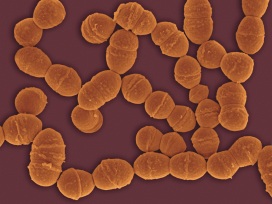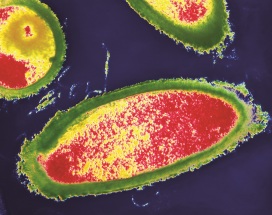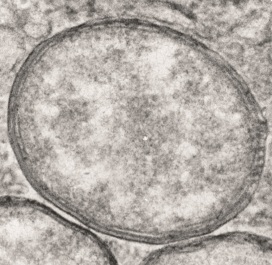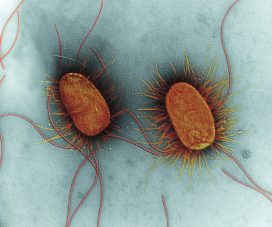Petri dish to puppetry

Spheres, spirals, rods, corkscrews… bacteria come in strange and beautiful shapes. Our Bacterial World exhibition (19 October 2018 – 28 May 2019) tells the untold story of life on a microscopic scale, and a recent Museum project brought together a research scientist, a group of school students and an artist to explore the patterns, textures and forms of beautiful bacteria. This science and art collaboration led to the creation of three fabulous bacteria-inspired puppets.

Our Public Engagement team worked with Iffley Academy, a school for students with special educational needs and disabilities in Oxford. The pupils were from the brilliantly-named ‘Jackson Pollock’ class and they fully embraced the bacteria theme, through museum visits, workshops and classroom activities.
As well as visiting Bacterial World, the students had a workshop with Dr Frances Colles, a microbiology researcher from the University of Oxford, where they learnt about the importance of bacteria in their lives. As well as working with the students to create their own bacteria superheroes, Fran talked about her own work and took part in a Q&A, where the students made the most of quizzing a real, live scientist.

Next, the students spent two days with artist and puppet-maker Georgina Davy, who gave them the chance to experiment with a variety of textiles and techniques, including Japanese shibori dyeing, fringing, plaiting and knotting. The children even created latex faces to ‘personalise’ the bacteria. The pupils worked with Georgina to gather ideas and create mood boards and ‘characters’ for each puppet. She then used these individual pieces to build three giant, bacteria-inspired puppets.

Just like the real bacteria that inspired them, the final puppets all have distinctive appearances and styles of movement. One is tall, green and plodding, another is pink, bobbing and quivering. The long, winding Chinese dragon-style puppet is slinky and searching. An artistic interpretation of bacteria, in motion.
Georgina Davy got a lot out of the collaboration and says:
This project has been the most unusual and marvellous project that a puppet maker could work on. Drawing upon scientific information from museum and academic staff that is enhanced and brought to life by students’ imaginations.
This project is unique in that the physical 3D puppet outcomes come from an almost entirely invisible world. Bacteria operate on an unfathomable microscopic scale. I am still finding it remarkable trying to envision this microscopic galaxy of bacteria taking place around us everyday in riots of colour, shape and movement. We cannot see the surreal bacteria forms that wriggle, bounce and swell around us, but they are there, some even tumbling around in forms like Chinese calligraphy. Their secret world is only unlocked by the microscope.




Once the puppets had been revealed to (and played with by) the students, they were transported to the Museum for the finale of the project – a public performance. On Saturday 11 May, three brilliant volunteers, Humaira, Tayo and Chantelle, showed off the work of Georgina Davy and the Jackson Pollock class to Museum visitors. The puppets twisted, shook and wiggled through the aisles, accompanied by percussion – drums and shakers courtesy of volunteers and visitors joining in with the performance.
If you’d like to see more about the Beautiful Bacteria project, we’ve put together a display in the Museum’s Community Case, where you can see original works by the Iffley Academy students. Until 6 August 2019.
 The Beautiful Bacteria project was funded by BBSRC.
The Beautiful Bacteria project was funded by BBSRC.












